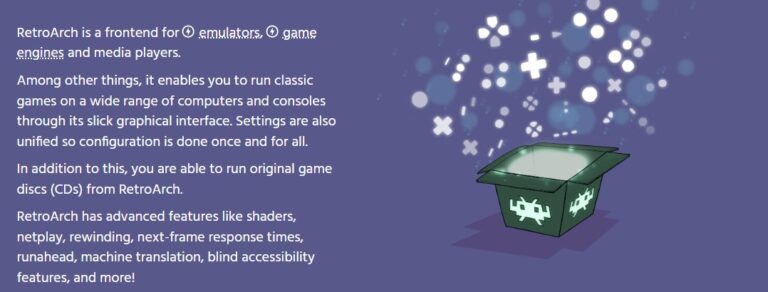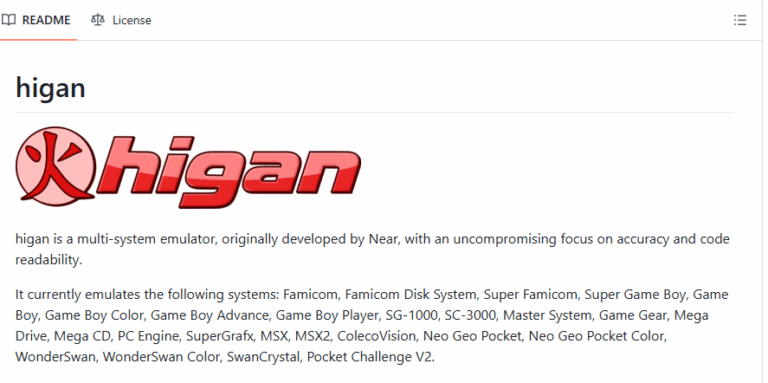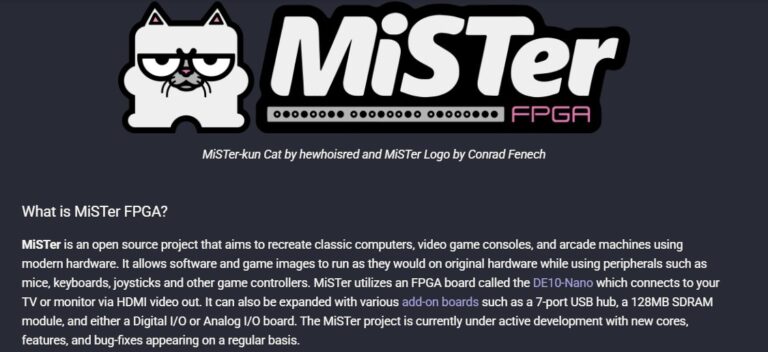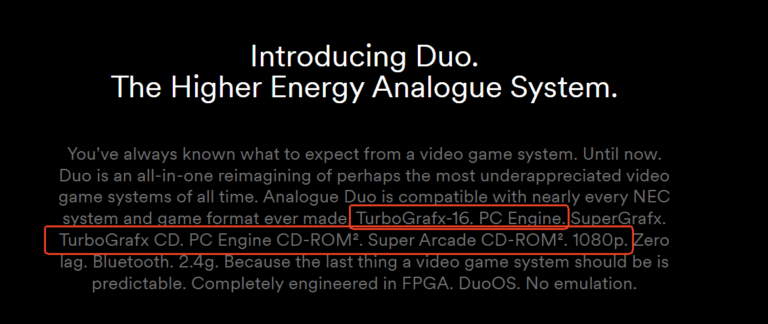Ready to dive into retro gaming? The PC Engine (TurboGrafx-16 in North America) is a treasure trove of classic titles, and accessing these gems today means finding the best PC Engine emulator.
This guide covers everything you need to know about PC Engine and TurboGrafx-16 emulators, from the console's history to the top software and hardware options. Whether you're looking for a PC Engine CD emulator to experience its legendary RPGs or a simple TG16 emulator for some classic shooter action, you're in the right place.
The 4 Best PC Engine Emulator
The PC Engine was born from a strategic collaboration between Hudson Soft, a prolific game developer famous for titles like Bomberman and Adventure Island, and NEC, a dominant force in Japan's PC market.
The PC Engine is celebrated for its "very excellent game collection, unique and high-quality games," particularly in the realm of 2D titles and shoot 'em ups.
When it comes to emulator, a variety of excellent options are available to emulate this classic console. Your choice of a turbo graphics 16 emulator will depend on your technical comfort level, your operating system, and what features you value most.
1RetroArch: The All-in-One Powerhouse

For those seeking a versatile pc engine turbografx 16 emulator, RetroArch is often the first and last stop. It's not a single emulator but a powerful, free, and open-source frontend that runs "cores"—modular programs that emulate different systems.
- Shaders: Apply visual filters to mimic the look of old CRT screens.
- Netplay: Host or join online gaming sessions.
- Rewind and Save States: Instantly turn back time or save your progress anywhere.
- Achievements: Unlock retro achievements for classic games.
2Mednafen: The Accuracy-Focused Command-Line Tool

Many frontends, including RetroArch's core, owe their excellence to Mednafen. Standing for "My Emulator Doesn't Need a Damn Fine Name," Mednafen is a free, open-source, multi-system emulator known for its extreme accuracy.
3Higan/ares: The Preservationist's Choice

For the ultimate purist, Higan (and its performance-focused fork, ares) aims for a different goal: cycle-level accuracy. Developed by the late, renowned developer Near, its mission is to replicate the original hardware's behavior as perfectly as possible.
4OpenEmu: The Elegant macOS Solution

If you're a Mac user, your search for the best pc engine emulator should start and end with OpenEmu. This open-source emulator is designed exclusively for macOS and is lauded for its elegance and ease of use.
5Comparison of these 4 PC Engine Emulators
The following table compares the major PC Engine emulators solutions discussed:
| Solution | Accuracy & Compatibility | Usability & Features | Performance | Reliability & Credibility | Community Support | Cost | Notes |
|---|---|---|---|---|---|---|---|
| RetroArch (Beetle PCE FAST) | Excellent: Accurate with HuCard, SuperGrafx, CD-ROM² | Good: Unified interface, rich features, steep learning curve | Excellent: Low frame response time | Very High: Open-source, active GitHub, official site | Very High: Large active community, docs and tutorials | Free | Requires BIOS, CHD format recommended |
| Mednafen | Very High: Known for accuracy, excellent for challenging games | Fair: Command-line driven, GUI frontend needs extra install | Excellent: High precision, good performance | Very High: Open-source, active GitHub | Good: Technical community support, extensive docs | Free | Requires BIOS, command-line setup |
| OpenEmu | Excellent: Based on Mednafen and other cores, high accuracy | Very High: Native macOS UI, ROM management, cover art, save states | Excellent: Optimized with macOS technology | Very High: Open-source, active GitHub, macOS recognized | Fair: macOS user community support | Free | macOS exclusive, requires BIOS |
| Higan/Ares | Very High: Cycle-accurate, focused on original experience | Fair: Simple interface, core simulation, no advanced filters | Good: High precision needs higher specs | Very High: Open-source, active GitHub, praised for accuracy | Good: Technical community support, not as mainstream | Free | Requires BIOS, high hardware requirements |
Hardware Emulation & Alternatives
Sometimes, a software-based turbo graphics emulator isn't enough. For those seeking the highest level of authenticity or convenience, hardware solutions offer a different path.
1MiSTer FPGA: The Pinnacle of Accuracy

Field-Programmable Gate Array (FPGA) systems aren't emulating software; they are reconfiguring their own hardware circuits to behave identically to the original console's chips. The MiSTer project is the gold standard in this space.
Pros
- Near-perfect, hardware-level accuracy with virtually zero input lag. It's as close as you can get to playing on the original console.
Cons
- The initial cost is significantly higher than using free software, and the setup process is more complex, requiring some technical know-how.
2Analogue Duo: The Premium Clone Console

Analogue has built a reputation for creating high-end, modern consoles that play original game media. The Analogue Duo is their love letter to the PC Engine.
Pros
- Plays original HuCards, TurboChips, and CD-ROMs from all regions out of the box. It offers the convenience of a modern console (like HDMI output) with the tangible experience of using original games.
Cons
- It is extremely expensive and often sold out due to high demand.
3TurboGrafx-16 Mini: The Plug-and-Play Option

For the most casual and straightforward experience, official mini-consoles are a great choice.
Pros
- The TurboGrafx-16 Mini is an official, legal, and incredibly simple plug-and-play device. Just connect it to your TV and start playing.
Cons
- You are limited to the pre-loaded library of games. You cannot add your own, so if your favorite title isn't included, you're out of luck.
4Comparison of hardware solutions
| Solution | Accuracy & Compatibility | Usability & Features | Performance | Reliability & Credibility | Community Support | Cost | Notes |
|---|---|---|---|---|---|---|---|
| MiSTer FPGA | Ultimate: Hardware-level replication, closest to original | Fair: Requires assembly and complex setup | Ultimate: Extremely low input latency, true hardware experience | Very High: Open-source, community highly values authenticity | Good: Active FPGA enthusiasts community | High: Hardware cost + additional accessories | Requires DIY assembly |
| Analogue Duo | Ultimate: Plays original cartridges/CDs, hardware-level compatibility | Very High: Plug and play, built-in system card, no ROM/emu management needed | Ultimate: True hardware experience | Very High: High-quality clone, well-recognized in the community | Limited: Product itself doesn't require much support | High: Device cost, may require wait | Only physical games, no ROM loading |
| TurboGrafx-16 Mini | Good: Official simulation, pre-loaded games | Very High: Plug and play, simplest setup | Good: Official optimization | Very High: Official product, trusted credibility | Limited: Closed system, no expandability | Moderate: More expensive than software emulators | Fixed game library, no expansion options |
Important Note: BIOS for PC Engine CD Games
The key to unlocking PC Engine CD emulator and Turbografx CD emulator games is the BIOS. This is a common stumbling block that frustrates many newcomers.
Simply put, the BIOS file is the System Card firmware that the original console needed to operate the CD-ROM drive. Most emulators, including RetroArch, Mednafen, and OpenEmu, require this file to run CD games.
- The Recommended BIOS: The most compatible and widely recommended file is the Super CD-ROM2 System V3.0. It is typically named
syscard3.pce. - Placement is Everything: You must place this file in the correct folder for your emulator to find it. For RetroArch, this is usually the
systemorbiosfolder. For OpenEmu, you can drag and drop it into the main window. - Naming Convention: The filename is critical. It must be named exactly
syscard3.pce, in all lowercase letters. An incorrect name or capitalization is the most common reason CD games fail to load.
Conclusion
The PC Engine / TurboGrafx-16 is a console that truly deserves to be experienced. Thanks to a dedicated community, you have a wealth of incredible options to choose from.
To summarize, here are our recommendations:
- For Most Users (PC & Android): Start with RetroArch and the Beetle PCE FAST core. It offers the best balance of performance, features, and platform support.
- For Mac Users: OpenEmu is the undeniable champion, providing a seamless and beautiful user experience.
- For Purists & Enthusiasts: Dive deep with Mednafen (using a frontend) for its raw accuracy, or if budget allows, explore the world of MiSTer FPGA for the ultimate authentic experience.
No matter which path you choose, remember the golden rule for CD gaming: get the syscard3.pce BIOS, place it in the right directory, and name it correctly. Now, go forth and discover the incredible library of one of gaming's most beloved cult classics!








Leave a Reply.